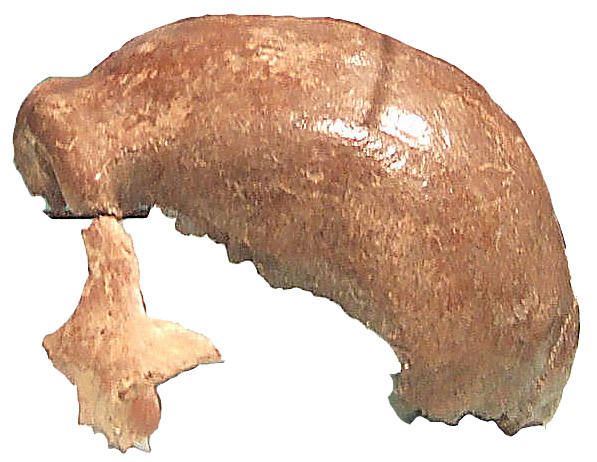Feldhofer 1, Neanderthal 1 is the scientific name of the 40,000-year-old type specimen fossil of the species Homo neanderthalensis, found in a German cave, Kleine Feldhofer Grotte, 13 kilometres (8 mi) east of Düsseldorf, located in the Neandertal valley, also known as the Neander Valley in August 1856. In 1864 the fossil's description was first published in a scientific magazine and underwent official naming, which has never been altered since. However, the finding was not the first hominid and particularly Neanderthal fossil discovery, rather, the true nature and significance had not been recognized on any of the earlier occasions and therefore no separate species' names were assigned. The discovery was made by limestone quarry miners. Neanderthal 1 consists of a skullcap, two femora, the three right arm bones, two of the left arm bones, ilium, and fragments of a scapula and ribs. The fossils were given to a local teacher and amateur naturalist, Johann Carl Fuhlrott. The description of the remains was determined by anatomist Hermann Schaaffhausen. The find was announced jointly in 1857. In 1997, the Neanderthal type specimen was the first to yield ancient mitochondrial DNA sequences.
